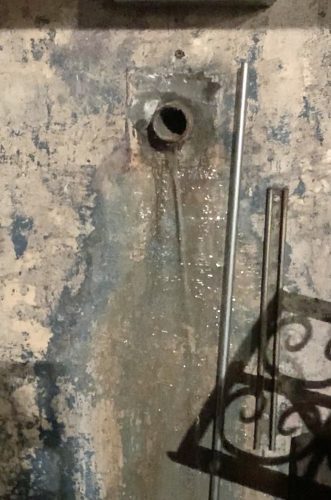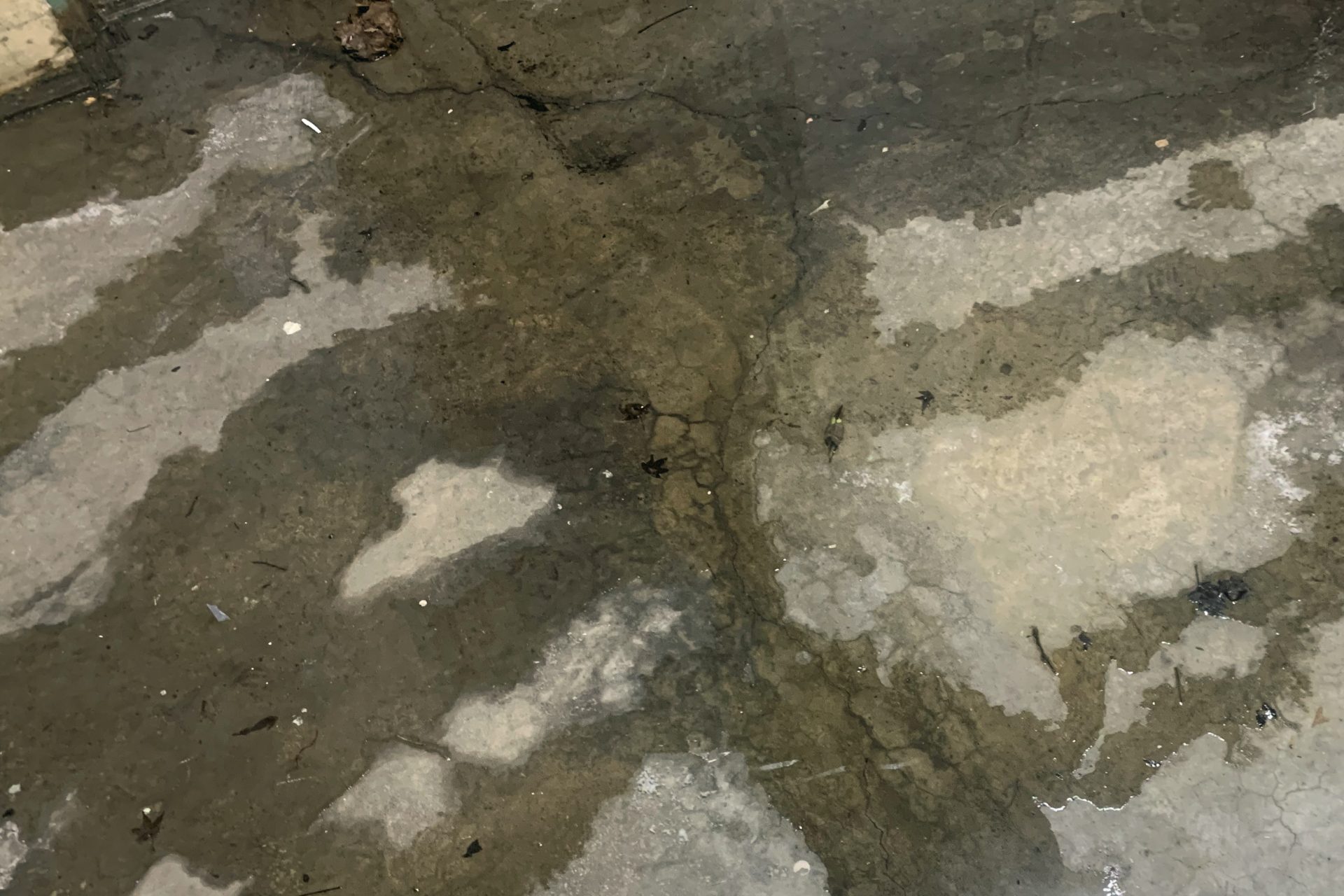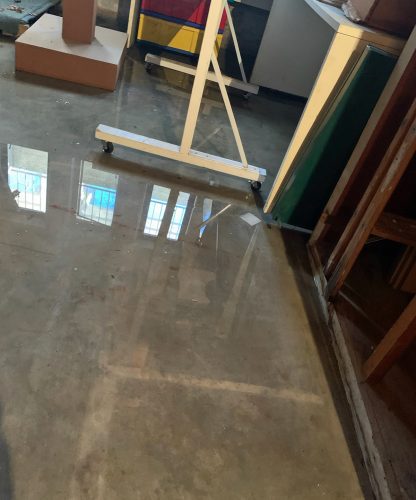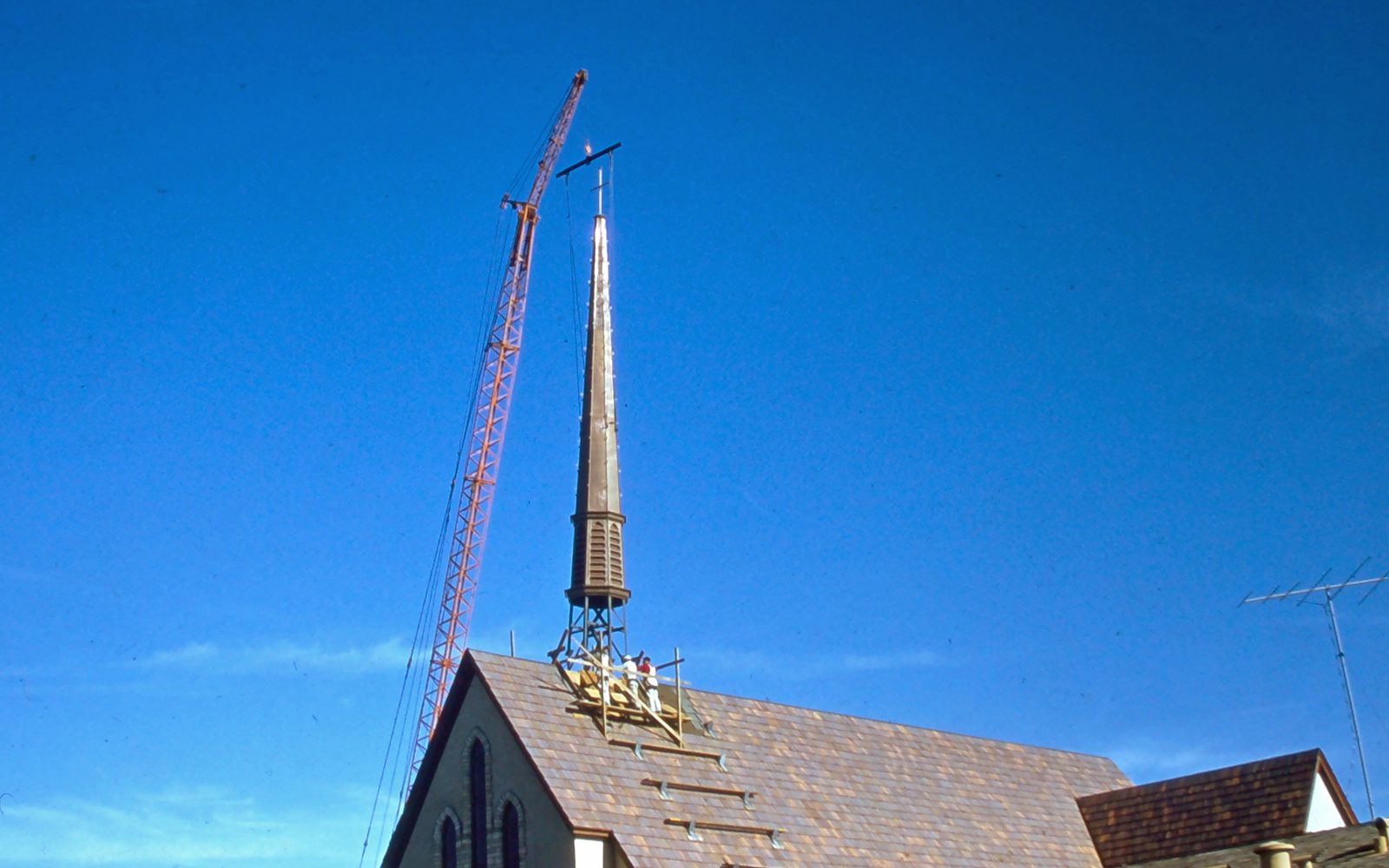This past week we’ve had serious flooding in the church basement. This has happened a few other times during the past 25 years, but not as seriously as this past week. Given the history of flooding in the area (see Floods) we wondered if this had always been a problem? A little perusal of the archives and construction records answered the question…we’ll let these records tell the story!
The main sanctuary was built in 1956. In May of 1957, Canon West wrote to the SPACP (click here to learn about the SPACP):
“During this morning’s cloudburst, I discovered that the basement hallway in the church was flooded.” (Construction Archives)
In January of 1958, St. Mark’s wrote to the church contractor (Barrett & Co.) :
“In the basement next to the Heater Room, a bad leak in the outer wall developed during rains on December 15. The water came in through the concrete opening around the cast iron pipe entrance through the wall.” (Construction Archives)

In March of 1958, Canon West wrote to the contractor complaining that:
“…water is entering the basement spaces to such an extent that the area is unusable. Carpets installed in a portion of the spaces will have to be removed.” (Construction Archives)
The church had planned to use the rooms in the basement for various activities like the Boy Scouts and the Youth Groups (who did meet there for many years).
When the Vestry met in April of 1958, they discussed the problem and then “inspection of the wet floors in the basement followed.” Although initially they felt that a problem with the design or construction of the building was at fault, this was the first time they admitted that “the possibility of such leaks had been discussed by our Architect and the Contractor before construction since the basement floor is about one foot below the winter water table in this area.” (Vestry Minutes)
In response to a letter from the church in July of 1958, Mr. Elston, the architect, reminded the church that during construction he had suggested a drain line be installed to protect the basement from dampness or from flooding, but that this suggestion was not implemented (Construction Archives).
After more flooding in October, the contractor responded to a letter from the church discussing remedies for the flooding. The contractor explained that although waterproofing on the outside of the building might help keep water from entering through the walls, it:
“…would not completely solve your present problem…your problem arises when the ground water level raises above the basement slab due to heavy precipitation.” (Construction Archives)
Barrett further explained that unless the slab had been sealed UNDERNEATH during construction, when the water table rose it would be impossible to stop water coming in from the cracks in the floor and the joints of the wall and floor. The contractor did say:
“we regret that we did not further press for a review of the waterproofing at the time of excavation for the basement.” (Construction Archives)

After all of these months of back and forth, the church concluded that there were probably two main problems:
-The original sewer line on the property had not been sealed off before construction and was leaking water into the basement area!
-The building was not designed to take into account the “hydrostatic head apparent at this location.” (i.e. the annual winter water table)

SPACP reported to the Vestry that, in fact, there was “no sure fire solution that can be guaranteed” to solve the problem. The best St. Mark’s could hope for was to ask the city to block off the old sewer line and to spend about $2,700 to install a protective membrane on the exterior of the basement walls.
What happened? Various attempts to seal the walls and around the pipe have been made since 1958, but this past week’s storms had the same result…the basement flooded. 65 years later, we’ve got the same problem. When heavy rain saturates the ground and raises the water table, the basement is basically like a cracked and leaky vessel sitting in a bowl of water.
At the same time that the basement saga was playing out, there was another big post construction problem…the steeple was leaking and making loud noises.
In April of 1957, Canon West wrote to the Architect:
“For some time, I have been concerned about loud banging noises that seem to emanate from our church tower. At times it’s quite similar to the effect of thunder, and is most disconcerting from inside the Church, especially from the gallery. During this afternoon’s high wind, I could actually see the sheet of copper below the louvres vibrating like a diaphragm. With each such vibration, the familiar “boom” was audible from the street and was even more pronounced indoors.” (Construction Archives)
Somewhat dramatic, Canon West goes on to indicate he is worried that “alarm” will spread and the congregation will “fear that the steeple is not safe.” (Construction Archives).
To make matters worst, by February of 1958 the SPACP minutes noted that:
“Canon West informed me that rain came through the shingles, apparently at the base of the steeple, in such quantities that he has to place receptacles in the balcony to minimize water damage.” He also complained that when the wind was heavy, the steeple still made an offensive “drum-like” noise. (St. Mark’s Archives)

Mr. Elston responded in July of 1958 noting that:
“In regard to the noise, he had suggested a heavier gauge metal for the steeple, but that the church changed to a lighter gauge to save money.” He believed that this caused “more fluctuation and therefore noise when it’s windy.” (Construction Archives)
In March of 1959, the steeple was still leaking and making noise. In April the construction company said they would install a waterproof membrane to “lick the problem of leakage into the gallery.” (Construction Archives)
What happened? The steeple no longer leaks, and they did stabilize the steeple to some extent. But stop by on a windy night and you can still hear the booming noise!



My basement has been flooded all week, numerous workers here, in and out, money down the drain, ha, ha, get it?? A small fortune spent and still no heat for days, going crazy here!!